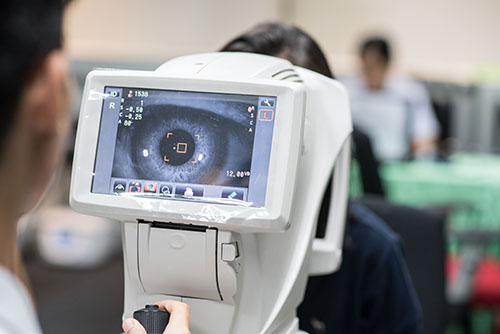What is LASIK?
LASIK (laser-in situ keratomileusis) is the most popular type of refractive eye surgery. This is elective surgery, meaning there is no medical need for it.
LASIK is a procedure that improves vision and reduces or eliminates the need for glasses or contact lenses.
There are other kinds of refractive laser eye procedures, but LASIK is the most popular. Part of its popularity comes from the short recovery, fewer side effects, and fewer complications than other laser vision correction procedures.
The surgeons at Stahl Eyecare Experts have performed thousands of LASIK procedures in New York.
How Does LASIK Work?
The cornea is a vital part of the eye that focuses light on the retina and allows us to see. The bending and focusing of the light are a process called refraction.
Problems with refraction occur when the shape of the eye prevents light from focusing directly on the retina. Variations in the shape of the eye or curvature of the cornea can cause vision problems.
LASIK can be used to correct several common refractive problems by removing corneal tissue. This moves the point of focus directly on the retina:
- Nearsightedness (Myopia): With myopia, close objects are seen clearly, but distant objects appear blurry. This occurs when the eyeball is longer than normal, or the cornea curves too sharply. With LASIK, the steep cornea is made flatter by removing tissue from the center of the cornea.
- Farsightedness (Hyperopia): In hyperopia, distant objects may seem clear, but close objects are blurry. This happens when the eyeball is shorter than average, or the cornea is too flat. With LASIK, the tissue gets removed from outside the central zone of the cornea to correct it.
- Astigmatism: When someone has astigmatism, both near and distant objects can appear blurry or distorted. This is because of the cornea curving or flattening unevenly. In LASIK surgery, the cornea is made more spherical.
With our new iDesign wavefront technology, LASIK can also treat more complicated eye disorders. These cause blurriness, glare, halos, and double vision.
Is LASIK Safe?
Yes. Millions of people have had LASIK with excellent outcomes! LASIK safety and success has continued to improve with evolving new technology. In fact, the U.S. military has adopted widespread use of this surgery. This led to pilots and soldiers no longer needing glasses in dangerous situations.
Most LASIK surgery is now performed using precise lasers. But there are risks and complications to all surgeries. Your Stahl Eyecare Experts surgeon will discuss the benefits and risks with you before you make the decision to have surgery. For details, read our page on Risks of LASIK.
Can Everyone Have LASIK?
No, LASIK is not recommended for everyone. Your eye surgeon will do a thorough eye examination. They will also go over your medical history before determining if you are a good candidate for LASIK. Patients with the following conditions should probably not have LASIK surgery:
- Thin corneas, often associated with aging
- Keratoconus (bulging of the cornea into a cone-like shape)
- Autoimmune disorders such as rheumatoid arthritis
- Eye diseases such as glaucoma, keratitis, and uveitis
- Persistent dry eye
- Weakened immune system
- Presbyopia -the gradual loss of ability to see near objects that occurs in aging
- Pregnancy and other hormonal changes

What Should I Expect With LASIK?
It’s important for LASIK candidates to have realistic expectations. The goal of refractive surgery is to reduce your dependence on corrective lenses. The success of the surgery often depends on the level of a patient’s refractive error before surgery. It is generally less successful for patients with severe vision problems. Our doctors offer a free pre-operative consultation in which they will check your eyes. They can often predict how much vision improvement can be achieved.
Some patients experience visual side effects such as dryness, glare and halos right after surgery, but for most people, they diminish after a few months. Everyone heals differently. Some patients’ eyes may be over-corrected, and some are under-corrected. It is normal for some patients to need more precise vision correction after several months. This is called “enhancement surgery”.
What Happens During LASIK Surgery?
LASIK is an outpatient procedure that takes less than a half-hour to complete. Most patients have the procedure on both eyes on the same day. Plan to arrive at the Stahl Eyecare Experts laser center one hour before your procedure. After check-in, you may be offered a sedative to help you relax. You will sit in a reclining chair, the area around your eyes will be cleaned, and a sterile drape may be applied around the eye. Your doctor will administer drops that numb your eye so that you can be awake but comfortable during the procedure.

Your surgeon will use a femtosecond laser that rapidly cuts a precise flap in the cornea. You may feel a little pressure, but no pain. You will then be asked to look at a target light while a second pre-programmed laser makes the necessary adjustments to the shape of the cornea. The protective layer of the cornea will be folded back into place to heal without stitches.
What Happens After LASIK?
Your vision may be blurry immediately after the surgery, so you will need a ride home. You will not be able to drive yourself home after having LASIK. Plan to rest for the rest of the day. Your eyes might itch, burn, or be watery. This discomfort should not last more than a day or two.
If you need to ease your discomfort, you can use an over-the-counter pain reliever. You will be given eye drops, which you will need to use as directed for optimal healing.
Your surgeon will make an appointment to see you a day or two after surgery to check how your eyes are healing. They will also make sure there are no complications. Most patients can return to work a day or two after surgery. Want to learn more about LASIK or other vision correction procedures in Manhattan? Schedule an appointment with Stahl Eyecare Experts in New York City today!


